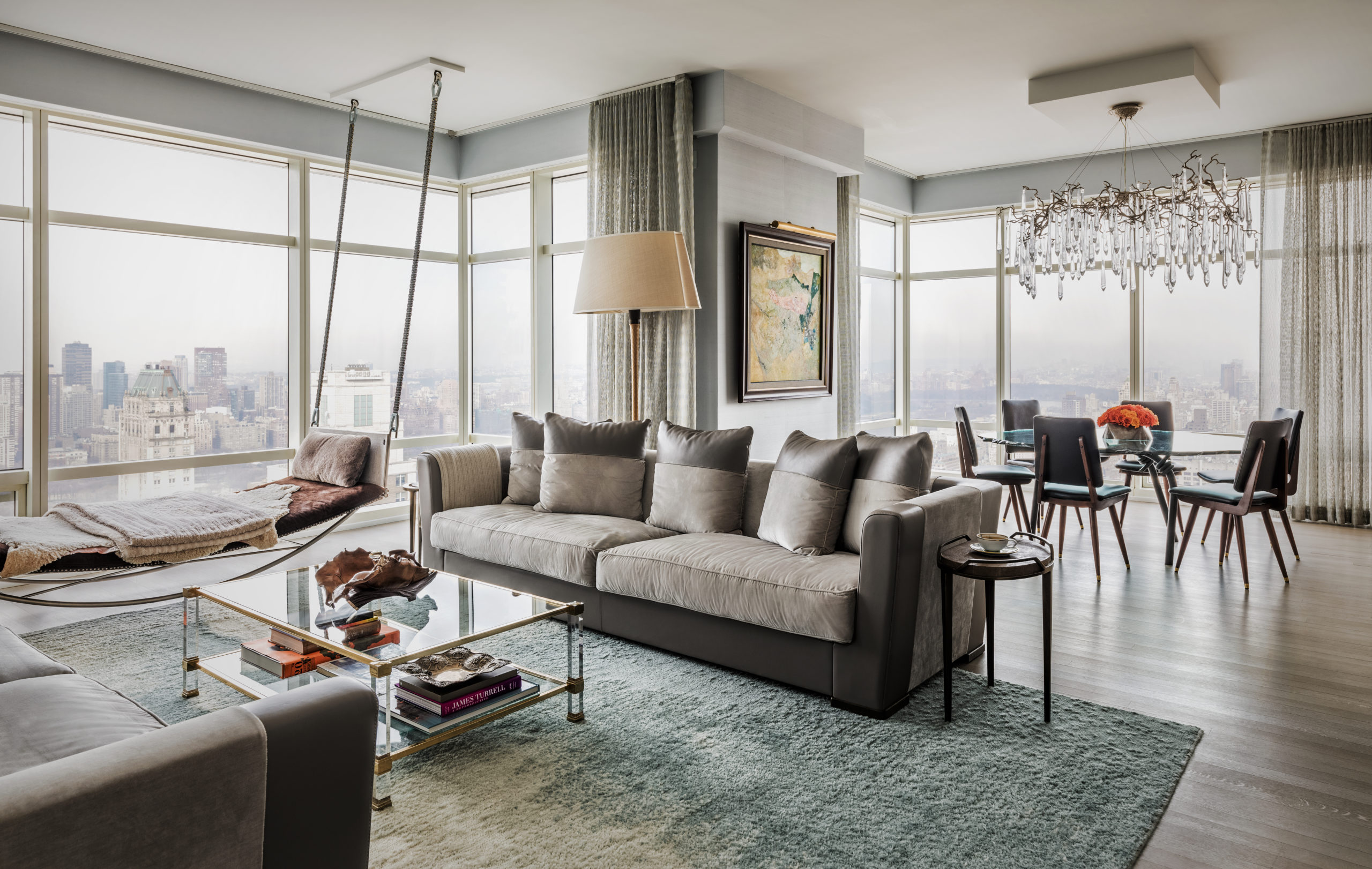As any interior designer would attest, the key to a successful room lies not only in what is within its four walls, but also in how it relates to its environment. The importance of a connection with nature was heightened for many of us during the lockdowns of the past 18 months, when access to the outside world was restricted and the joy in simple pleasures such as birdsong, plants and flowers poignantly enhanced. In the hands of interior designer Shalini Misra, however, natural materials and interior style have always had a symbiotic relationship.
In a room with a design inspired by nature, with organic materials, you feel more comfortable.
Shalini Misra
Misra, who started out around 30 years ago as an architect before expanding into interior design, cites as one of her main style influences biophilic design – a concept that encourages bringing a connection with the outside world into interiors through the use of natural material, colours and patterns that emulate the natural environment – to enhance human well-being. “In a room with a design inspired by nature, with organic materials, you feel more comfortable,” she explains, “because what you’re touching, what you’re feeling, are the right textures.”
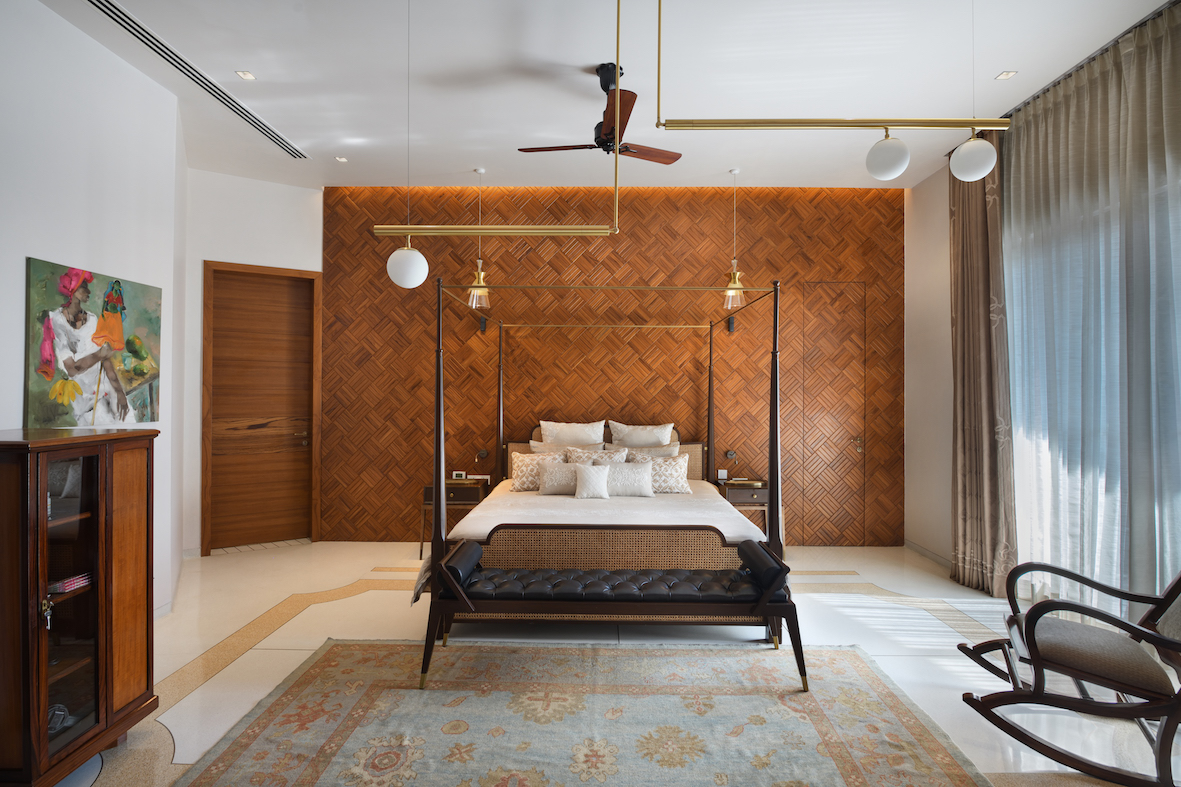
In the case of a recent project, a 25,000-square-foot newbuild farmhouse south of Delhi in India, the design of the entire property centred on the natural features of its two-acre site.
“Sometimes you’re very lucky; we have really wonderful old trees and shrubs at that property,” she says. “There’s a particularly lovely frangipani tree, so we built the house around it, creating a courtyard open to the sky with the tree at its centre, with all the rooms looking on to it. There are other trees and plants in the courtyard too, and parrots and other birds come there; it has its own life. It’s like watching this really beautiful production, because the nature itself has sounds, smells and activities going on, all of which you can watch from the house.”

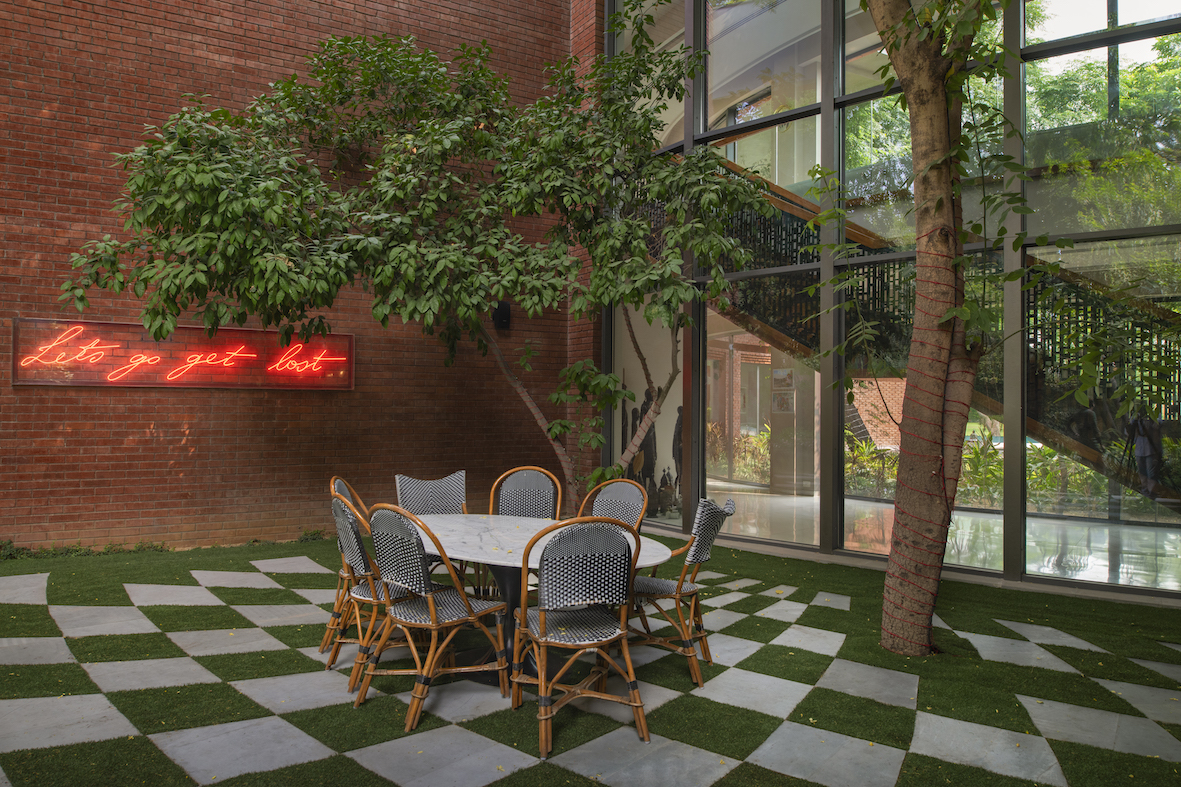
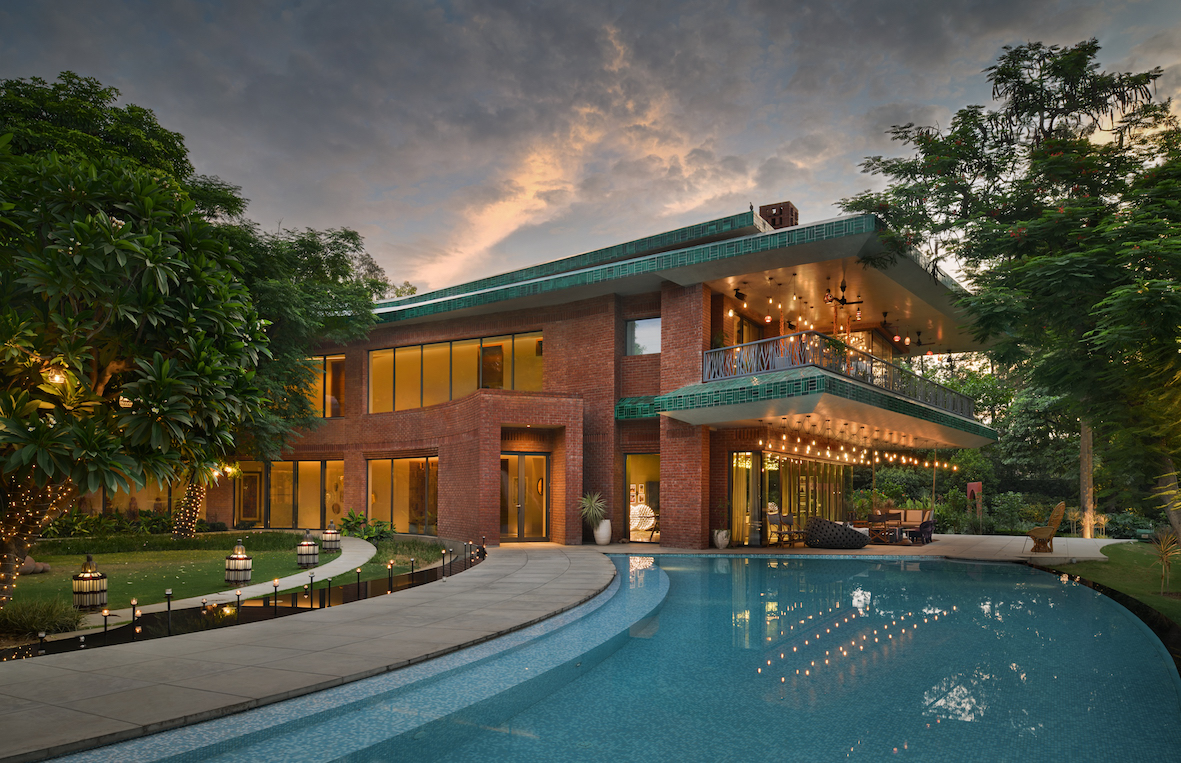
Within the house, she describes the interior as “a path to discovery”; all the rooms are connected to each other and most have nature on two sides. The palette of materials has an earthy feel that roots it within its setting, from the local, sustainably sourced teak used for doors, wall panelling and other elements, to the exposed brick walls and the stone floors. The warm, rich tones are combined with brass detailing and a neutral palette, which lighten the look and give it a contemporary edge.
As with all Misra’s projects, natural light is emphasised and maximised as much as possible: she always positions the main living spaces of a home in the part of it that receives the most natural light, so that the inhabitants can absorb it more easily. Here, vast expanses of glass allow light to flood the interior, while also reflecting the verdant scene outside.
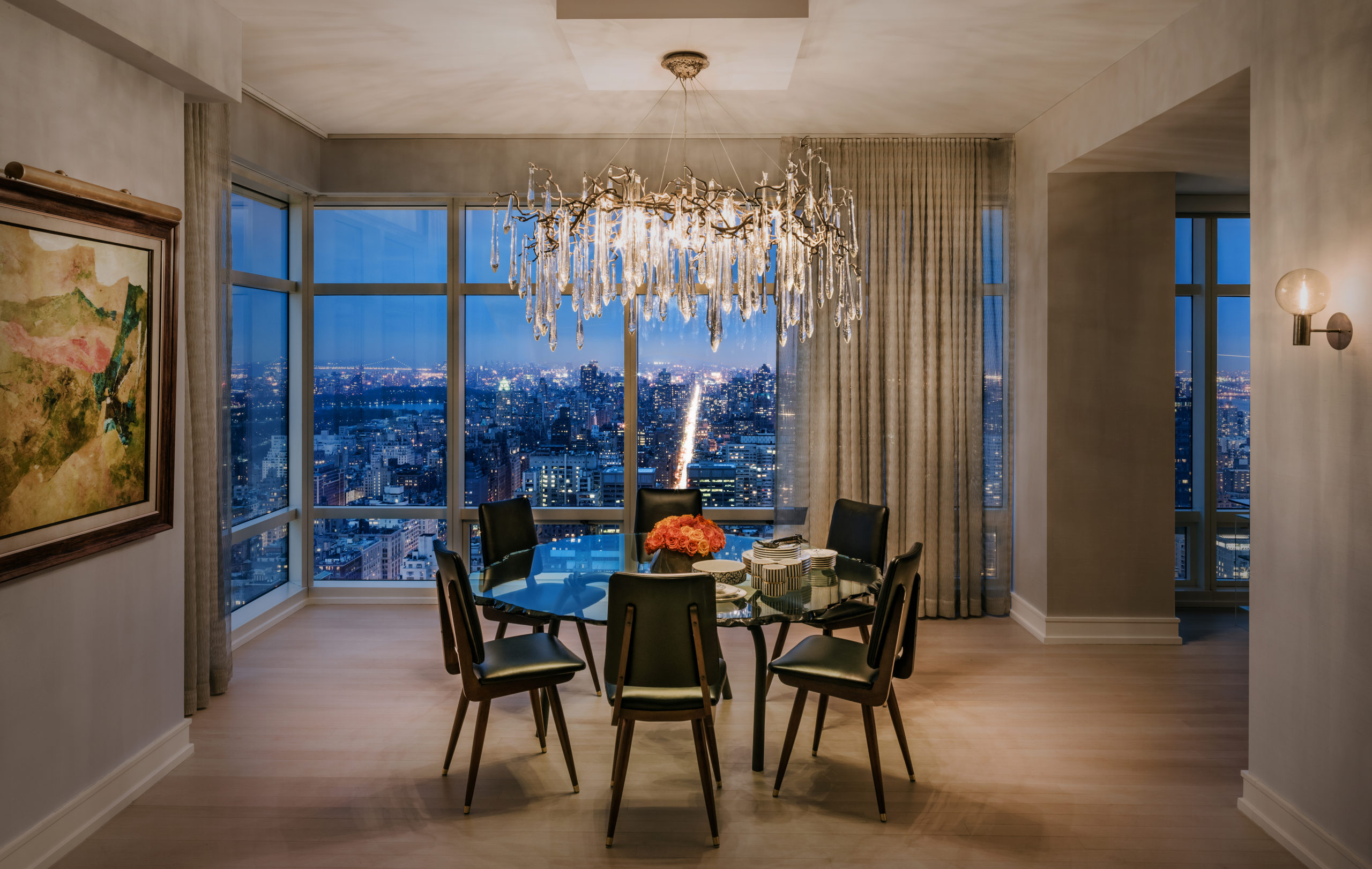
Even when a property is not situated in such a lush spot, she believes there is always a way to reflect the outside world in an interior scheme. Take, for instance, a very different recent Misra project – an apartment on the 38th floor of a skyscraper in central Manhattan. Her aim here was to create a serene space that would be a sanctuary for its owners at the end of a busy day, but also one that referenced its specific location. Her solution was to take inspiration from the view beyond the windows and base her palette on the colours of the sky – a scheme that couldn’t be more different from the Indian farmhouse, yet similarly invites nature in.
“The main colours are blue and green, with a small pop of orange here and there,” she says, “and the floor is in a light grey stained wood which is almost like the colours of the clouds outside. It’s very calming. We also chose furniture with legs so that it appears to float off the ground, and glass-topped tables, so that it feels quite seamless, not heavy at all. The sofas are in very neutral colours; there’s a lightness in the interiors.”

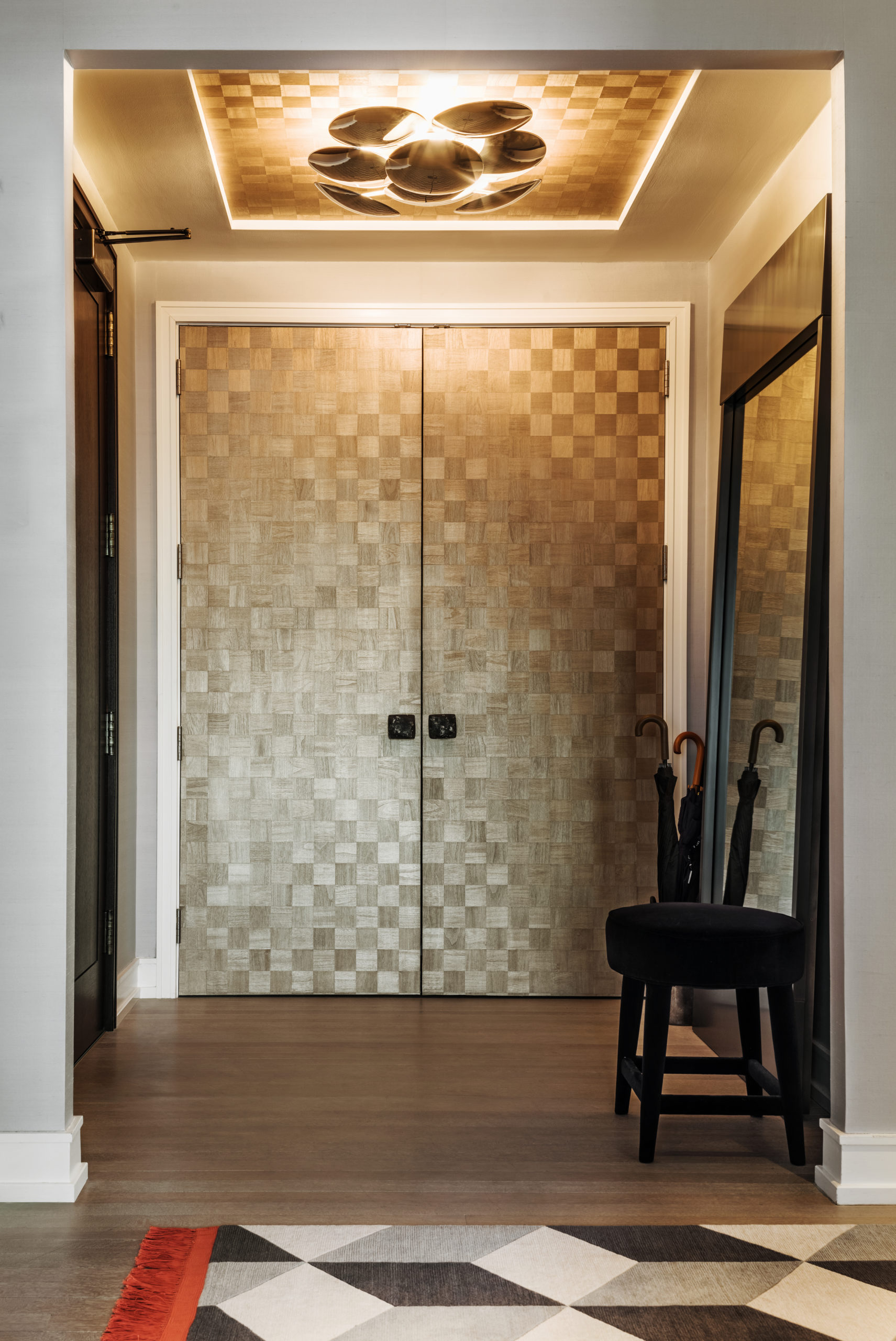
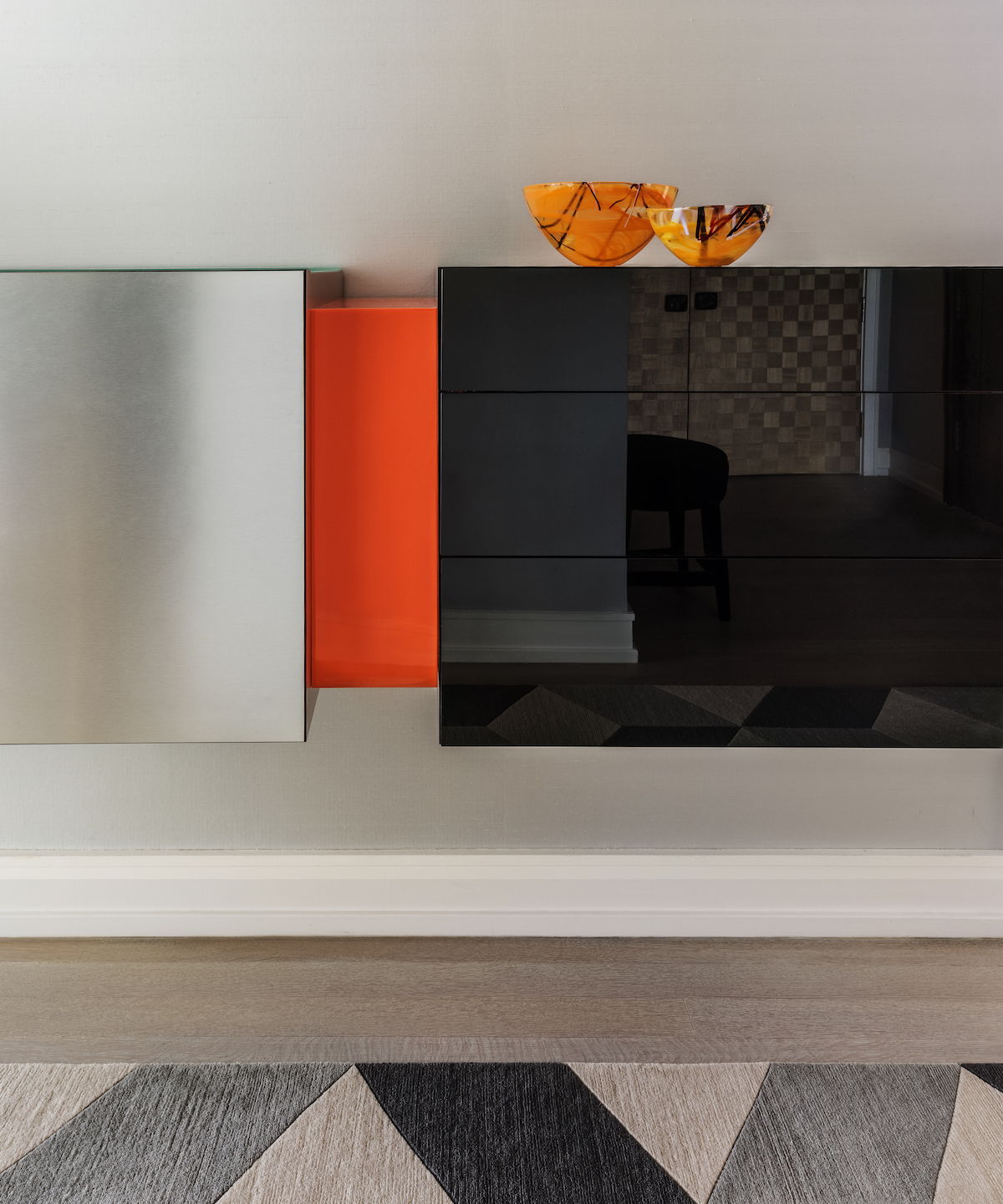
To offset what could have been a very cool scheme, she has added warmth through her use of different textures. The wallpaper in the main bedroom is hand-painted and embroidered with a cherry-blossom motif (“I often bring natural patterns in with wallpaper,” says Misra); a panelled banquette in buttery pale-blue leather brings softness and curves to the office area; and the seating throughout is covered in a tactile mix of leather and velvet. “You can have lots of layers, while keeping the palette very neutral,” she notes. A swing seat suspended from the ceiling next to a window perhaps sums up the aesthetic of the apartment: a minimalist design, but loaded with textural blankets and cushions, and offering a spectacular view of the city skyline.Beautifully crafted pieces are, by their nature, sustainable,” she points out. “When something is handmade with skill, it has a lot of value, which makes you want to keep it and hand it down.”
Beautifully crafted pieces are, by their nature, sustainable. When something is handmade with skill, it has a lot of value, which makes you want to keep it and hand it down.”
Shalini Misra
Here, as in all her projects, Misra has included a judicious selection of locally designed furniture, as well as vintage pieces and antiques. Her early experience as an architect instilled in her a sense of the importance of using sustainable materials, which remains key to her decorating approach. As she points out, a fast-growing material such as bamboo loses its eco credentials if it has to be transported halfway around the world, so sourcing pieces with a local connection, particularly where they are made by hand, both enhances the aesthetic of the interior and reduces its carbon footprint. “Beautifully crafted pieces are, by their nature, sustainable,” she points out. “When something is handmade with skill, it has a lot of value, which makes you want to keep it and hand it down.”
Ultimately, it is a combination of layout, finishes and attention to detail that, according to Misra’s approach, will result in a home that both looks beautiful and enhances its inhabitants’ lives. “A connection with nature can be established in so many different ways, from spatial planning to the types of materials you use,” she says. “You are creating an interior that will feel good to be in, because it’s such a natural manner in which to live.”
Effect Magazine is brought to you by Effetto



